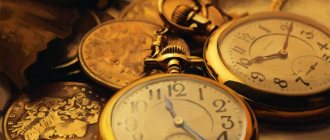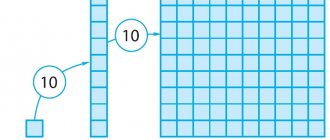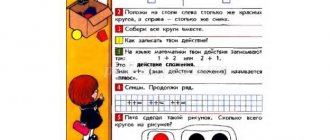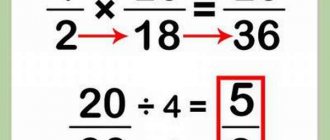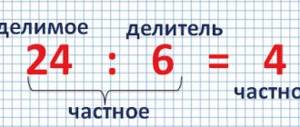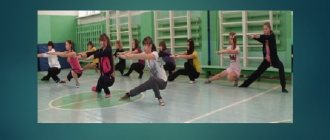Lesson summary in mathematics 3rd grade
Mathematics 3rd grade.
Topic: How people learned to count. Subject: mathematics. UMK: Perspective. Class: 3. Lesson topic: How people learned to count. Lesson type: learning new material. Technology of the lesson: problem-dialogue. Goal: consider the history of the emergence of numbers, Objectives: • Educational:
get acquainted with the history of the emergence of numbers, continue to improve mathematical skills and mathematical speech.
• Developmental:
continue to develop logical thinking, memory, attention, mathematical speech.
• Educational:
continue to cultivate interest in mathematics, respect for the opinions of friends.
Equipment: mathematics textbook, grade 3 L.G. Peterson 2014, presentation, video with physical exercises, cards with key words, multimedia board, projector, computer, speakers. Universal learning activities. 1. Personal:
• ability to admit one’s own mistakes;
• formation of value orientations; • formation of mathematical competence. 2. Regulatory:
• take into account the guidelines given by the teacher when mastering new educational material;
• check the calculation results; • adequately perceive indications of errors and correct errors found; • evaluate your own success in computing activities. 3. Cognitive:
• analyze the problem conditions;
• carry out synthesis of the conditions of the text problem; 4. Communicative:
• ask questions in order to obtain the necessary information; • express your opinion when discussing a task.
Lesson progress
1.Organization of the beginning of the lesson. Hello, please sit down. The cheerful bell rang. He told us to study. The long-awaited bell rang, the lesson begins. Put your mind and heart into your work, cherish every second of your work. 2. A minute of penmanship. Step back from your class work down one cell and write down a line of numbers that are divisible by 3, the last number you will have is 30. Whoever got the signal. What numbers did you write down? 3. Oral counting. Look at the slide, we will need to solve circular examples. The answer of the example matches the beginning of the following. 82:2. How much will? (41)
(the correct answer appears on the slide) So, what is the next example. (similar work with all examples)
Look at the slide and make up problems based on these expressions. Let 80 be apple trees and 2 be plum trees. Let's create a problem for the first diagram. Who came up with the signal? How much will be the answer? (similar work with other circuits).
And now we will remember the theme of multitude. Look at the multitude. Let A be a set of children, B a set of students studying English, C a set of students studying French, D a set of desks, E a set of students studying English and French. Find the sets: A, B, C, D, E. What do the shaded sets mean?
Now we will conduct a quick survey.
You must answer the question and prove your opinion. Whoever knows the answer raises his hand. How many legs do 8 elephants have? (32)
How did you know this?
How many horns do 9 cows have? (18)
How many tails do 6 donkeys have?
(6) One child has three kittens. How many kittens will the three guys have? (9)
How many fingers do the seven boys have?
(70)
To find out what we will study in class today, we will look into the magic chest.
(leaves with the names of topics are pulled out of the chest and attached to the board) Today we will get acquainted with the number system, the first digits, the discovery of zero and answer the question: is there a largest natural number? And first we will get acquainted with the number system. 4.Learning new material. Previously, people had to count on their fingers. To count a large number of objects, many people were involved in the counting. One counted units, the second counted tens, the third counted hundreds. Let's try to calculate it that way. (3 people come to the board: 1 student - units, 2 - tens, 3 - hundreds) I have 1 pen in my hands, show how people bent their fingers. And now I have 10 of them, and as soon as the ones became 10, the person who showed the tens bent his finger. Show me how it is. As soon as the tens became 10, what did the person who showed hundreds do? (bent 1 finger)
.
Thanks guys, sit down. This type of counting formed the basis of the number system adopted by almost all peoples of the world. It is called the disdecimal (the word is posted on the board) system. Guys, was it convenient to draw numbers on your fingers? (no)
Some peoples still have such number systems as
five-digit, twenty-digit (the word is hung on the board). The most serious rival of the decimal system turned out to be the duodecimal system (the word is posted on the board). dozens when counting (the word is hung on the board), that is, groups of 12 objects. Even in modern times, some goods are sold by the dozen, for example, sets of cutlery.
The Papuans counted everything in pairs, but it was their binary (the word is hung on the board) number system that turned out to be the most useful for modern technology, since modern computers operate on the basis of the binary number system. For a long time after the names of numbers appeared, people did not write them down because they did not know how to write. They resorted to notches on wood or bone, knots on ropes, drawings on soft clay, and much more. It was no longer possible to move such signs from place to place, remove some and add others. Instead, I had to think, mentally perform operations on the signs. Many different ways of writing numbers have been created by people. In Ancient Rus', numbers were designated by letters with a special sign-title (hanged on a board) which was written above the letter. Everyone knows the Roman numerals, which were used in Ancient Rome more than 2500 years ago.
Decipher what number is written on my board - MMXIV . (2014)
That's right, this is the year we are living in now.
Is the Roman system convenient? (no)
Roman numbering is relatively inconvenient: the records of numbers are long, and written calculations are impossible.
Roman numerals are used quite rarely nowadays. Guess the riddle. The ball bounces across the pages. He is looking for his sister, Which looks like a ring - Without beginning or end. (zero)
One of the greatest ancient Greek mathematicians, Archimedes, learned to name huge numbers, but he did not know how to designate them.
Zero is one of the greatest inventions in mathematics. Only after people learned to indicate the missing digits in the recording of numbers did they receive powerful knowledge of nature. Without zero, there would not be all modern mathematics, there would not be such achievements of the human mind as computers and spaceships and much more. Zero was first invented by the Babylonians about two thousand years ago. But they used it only to indicate missing digits in the middle of a number. They didn’t think of writing zeros at the end of the number. In India, about one and a half thousand years ago, a zero was attached to nine digits and it became possible to designate any number with these ten digits, no matter how large it was. And most importantly, recording such gigantic numbers has become quite short. Look at the slide and let's read the big numbers that we have in the modern world.
3-4.
We still use the Indian notation system. Over the course of many centuries, passing from people to people, they changed many times until they took on their modern form. The Arabs borrowed numbers from the Indians. Europeans, in turn, learned it from the Arabs. Therefore, our numerals, unlike Roman ones, began to be called Arabic. It would be more correct to call them Indian. They have been used in our country since approximately the 17th century (hanged on a board). Physical exercise. Is zero a natural number? (no)
Guys, tell me the natural numbers?
(1,2,3,4….)
We will now answer the question: Is there a largest natural number? For a long time people gave a positive answer to this question. At first the largest number was 2, then 3.4…. In ancient Rus', the number 10,000 was referred to as “darkness.”
Greece believed that the largest number was the number of grains of sand on earth.
But over time, people had to completely abandon the idea of the largest number.
Archimedes also proved that counting can continue indefinitely. However, it took many centuries for the idea of the infinity of the natural series to become publicly available. What is hidden behind the ellipsis in the entry? (that the natural series is infinite)
That’s right, no matter how much you write, there is no end or edge to this entry.
This recording could go on forever. We use all these great discoveries of the past every day. Thanks to writing in Arabic numerals, we can, for example, multiply by column. Let us count now. 5. Main stage. Reinforce previously learned topics. Look at the slide. Step back from the minute of penmanship 2 cells down. Write these examples in a column in your notebook and solve them. What should you remember when solving examples of multiplications with zero? That's right, we must sign the second factor, under a number other than zero. We do it ourselves. Whoever managed it - signal. (4 notebooks are taken for checking)
And now we will remember another type of task - solving equations. We decide on the options. On one's own. 2 people at the board behind the curtain. Examination.
6. Lesson summary. Reflection. You have some leaves on the table. Write down a series of natural numbers up to 10. What numbers did we use? (Arabic)
Since what century have they been used in our country?
(17th century)
Write down, 17th century, in Roman numerals.
What century are we living in? Write it down. What numbers did we use? What new things did you learn today? What number systems have we met? 7.D.z. Independent work No. 5.
We recommend watching:
Summary of a lesson in natural history in grade 3. Didactic games in a mathematics lesson in grade 3 at a correctional school. Correctional and developmental mathematics lesson, grade 3. Multiplication table for number 4 Math lesson notes in 3rd grade: Numbering numbers within 1000
Similar articles:
Mathematical brain-ring, 3rd grade. Scenario
Mathematical KVN, 3rd grade. Scenario
Extracurricular activity in mathematics, 3rd grade
Extracurricular activity in mathematics, 4th grade
Extracurricular activity in mathematics, 3rd grade
